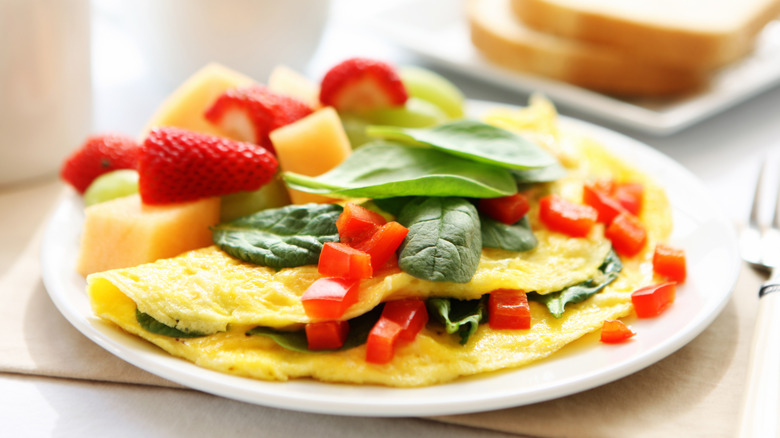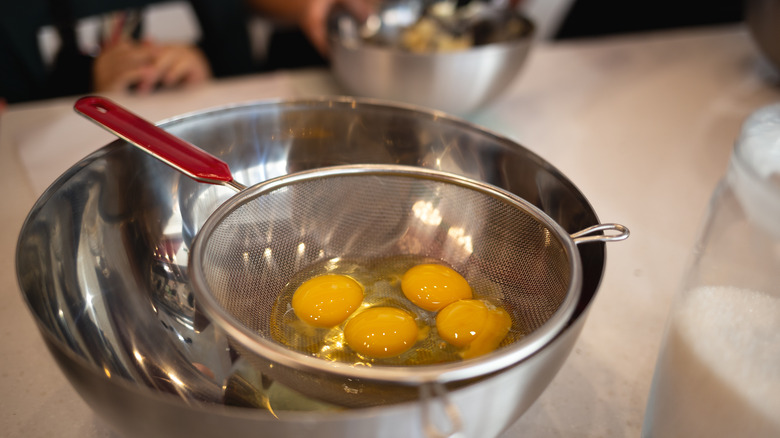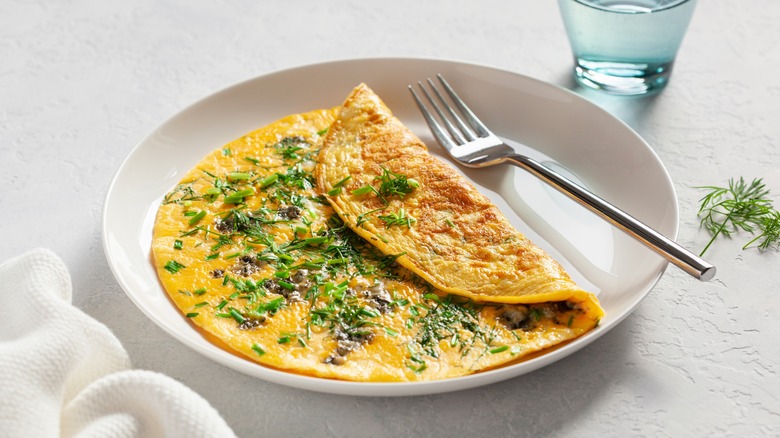A Sieve Is The Secret To Restaurant-Worthy Omelets At Home
It's no secret that one of the features of a high-quality omelet is the light, silky egg texture. But it can be hard to achieve that smooth, uniform consistency unless you use eggs from a carton. Luckily, there is an easy kitchen hack for cooking the perfect omelet with fresh eggs using something you likely already have in your cupboard: a sieve!
If you cook with raw eggs regularly, you know there are several different consistencies at play — especially concerning the inner and outer whites. You are probably familiar with the more watery part of the egg white (loose white), the thicker egg white (tight white), and the yolk. There are, in fact, eight distinct parts to an egg.
Because of this, it can be hard to achieve the desired smoothness when beating eggs by hand. The small holes in a sieve help acquaint these different textures and remove air bubbles, making for a smooth, homogenized liquid that will cook smoothly and evenly. The sieve can also prevent pesky bits of eggshell that might have made their way into the mix from ending up in the finished product.
How to use a sieve when making an omelet
When preparing an omelet, whether in the French or American style, the more consistent the liquid is before it enters the pan, the better. To achieve the smoothest egg mixture possible, not just any sieve will do. The very small holes of a fine mesh sieve are key to achieving the desired silky texture.
There are a couple of ways to sieve your eggs for an omelet. The first way is to crack your desired number of eggs directly into the sieve over an empty bowl and beat them with a fork or whisk, working them through the mesh as you do so.
Alternatively, you can beat the eggs in a bowl first, and then pour them through the sieve into a separate bowl — or straight into the pan. While the first way will save you time and reduce the number of dishes to wash, the latter is more reliable for removing those especially stubborn, gooey strings of egg white.
Cooking your sieved omelet
Once you've sieved your egg mix, it's time to get cooking. While there are nearly limitless possibilities when it comes to omelet fillings, toppings, and accouterments, it's hard to beat the classics. Whether you are making a simple cheese omelet or something more adventurous, like a Western-style omelet, the perfect egg texture is key.
Usually, you'll want to cook your omelet over medium heat with a couple of tablespoons of butter or a neutral cooking oil. Take care not to burn your butter or oil, adding your egg mixture after the butter stops bubbling or the oil begins to shimmer. To avoid under or overcooking your eggs, fold the omelet when the bottom and edges have set, but the mixture is not fully cooked through.
Be sure to choose a pan large enough so that the egg mix thinly but fully coats the bottom of the pan. This will ensure that the eggs you have so lovingly sieved will cook evenly and result in the silkiest, smoothest omelet possible.



